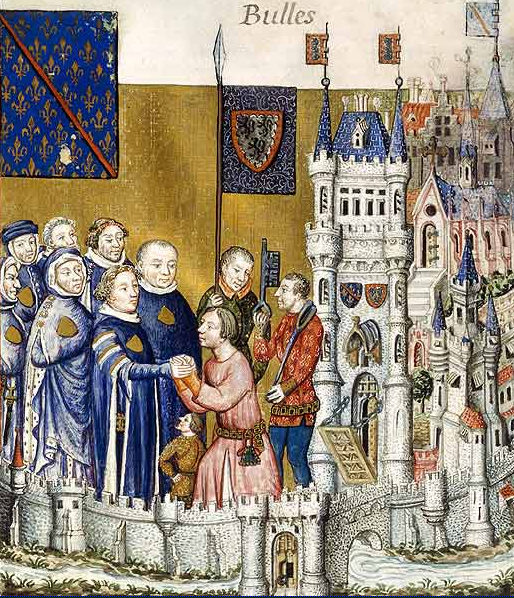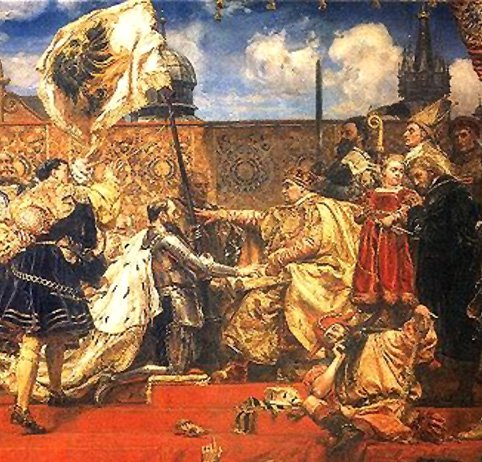In the ceremony of homage, the two elements of protection and service were symbolically pledged by the superior placing his hands over the other’s folded hands. An act of fealty was added whereby the parties swore on the Gospels or relics of the saints to be faithful to one another. Christ and His saints served as witnesses to guarantee its fulfillment.
Hence, these acts transcended mere material advantages since the very salvation of the parties’ souls depended upon fulfilling the feudal obligations. In that age of Faith, both parties took the act of fidelity seriously, understanding that a commitment was established that had to be executed with all honesty. By this agreement, each gave to the other the rights and elements to defend themselves against abuses and breach of contract. To break the feudal bond on either part was considered a felony and a dishonorable act, freeing the parties from their oaths of fealty and giving them the right and even the duty to resist.
Such a bonding of mutual trust is inconceivable without the virtues of the Faith. This explains why it is so misunderstood in our secular age. This spiritual bond can only come from a population imbued with the cardinal virtues and the theological virtues of faith, hope, and charity.
John Horvat II, Return to Order: From a Frenzied Economy to an Organic Christian Society—Where We’ve Been, How We Got Here, and Where We Need To Go (York, Penn.: York Press, 2013), 195.














